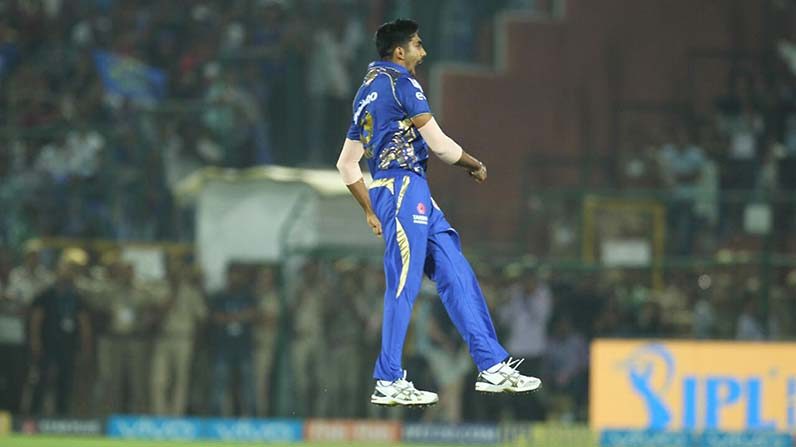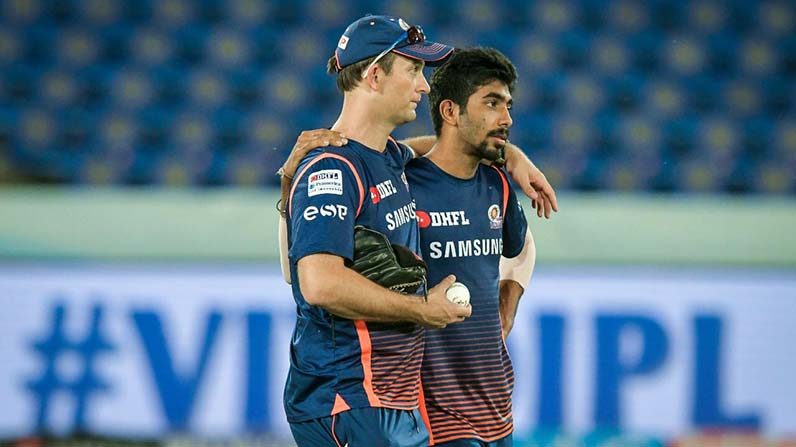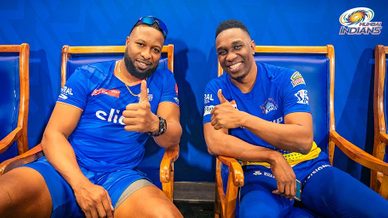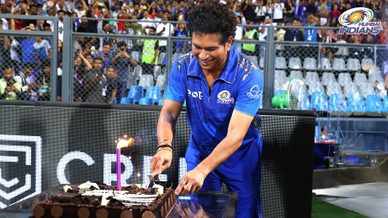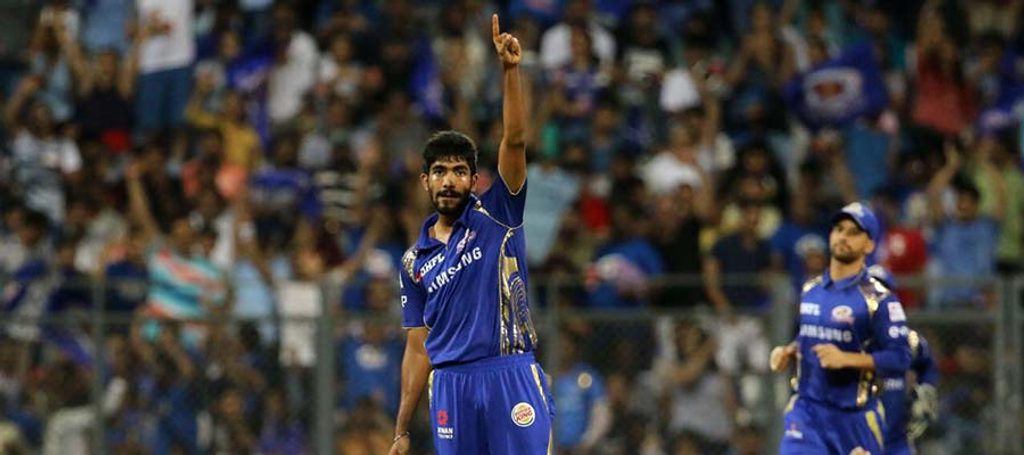
Jasprit Bumrah: If you don't believe in yourself, nobody can help you
Indian bowling has witnessed an all-round makeover to reach the strengths it has today. A genuine threat to even the ablest batting units in World Cricket, Team India has a list of prolific bowlers. Among the names, one that has been mentioned and praised umpteen times is that of Jasprit Bumrah.
He began with a bang in South Africa and almost a year later, Jasprit Bumrah has 49 Test wickets to his name in 10 matches — all of them away from home.
In an interview published on timesofindia.com, the 25-year-old opened up about his journey so far. Excerpts from the conversation:
Q: Dennis Lillee says you remind him of Jeff Thomson, who also had an unusual action. Being different can have its benefits too, don’t you think?
Bumrah: I’ve always been like this. I don’t take a lot of opinions seriously. Opinions change by the day, every hour, depending on what you bring to the table (how you perform). You can’t be taking every opinion seriously. What I try and do is I always focus on my strengths – what I can do, how far can I push myself – and I back them up with the best effort I can put in. If you don’t believe in yourself, nobody can help you. That’s something I’ve spent a good deal of time telling myself.
Q: Tell us about your childhood. Did you always want to bowl fast?
Bumrah: As a kid, I was like anybody else, playing cricket, enjoying it. The only difference is, right from when I can remember, I always used to love bowling. I used to play a lot of tennis-ball cricket and still remember telling my friends, I’ll give you three-four chances, you just keep batting and I’ll bowl. It was then that I began to realize that I was quick. Nobody told me that. When you play tennis-ball cricket, you’ve got to be faster in the air. The surface is of no help. That was one of the reasons that focusing on pace alone become important. I’m lucky I’ve been able to fulfil that dream.
Q: Did you grow up watching any fast bowler or bowlers in particular?
Bumrah: I used to admire a lot of fast bowlers. I used to watch cricket on TV only for the fast bowlers. I was never a fan of watching big sixes or batsmen scoring hundreds. I always used to enjoy watching fifers and bowlers bowling fast, scaring batsmen, intimidating them. No particular bowler as such.
Q: Fast bowlers typically have classic open-chested, side-arm actions. How come you never tried copying that?
Bumrah: I wasn’t really interested in copying anybody’s action. I can understand what you’re saying – those fanboy moments. But that never happened to me.
Q: The Cape Town Test, last year – your spells in the first innings and the second innings polarised opinions. Those watching you for the first time developed a viewpoint after watching you bowl on Day One and some changed opinions after your Day Four spell. Your thoughts?
Bumrah: I heard some of those opinions. I didn’t take them seriously then, don’t do that now. I take very few people seriously in my life. As a child growing up, I had a different action and people didn’t waste any time telling me that. I used to be inundated with suggestions on what I need to do and don’t. I didn’t listen to any of that. Never. It’s not like I don’t listen but what I do know is that at all times, I’ve got to find a way out on my own. That has given me a lot of self-belief – the idea of going and finding a way on my own. When I’m low, it is the same mindset that helps me today. Backing yourself is the best an individual can gift himself.
Q: How do you get your yorker so right?
Bumrah: As a kid, I played a lot of tennis ball cricket and with the tennis ball, you can bowl only one kind of a delivery. There’s the length in question, no bouncers. There’s only one ball that you have to practise. At that time, I played for fun. But later, when you start playing serious cricket, you realise the importance of that delivery. But not that because it naturally comes to me, I don’t have to keep practising it. It still takes the same amount of hard work to get it right in a match situation. I do spend enough hours now trying to get all the little things correct. The line, the length, the bounce. The game now actively involves playing three formats that are very different from each other. So, there’s constant work to be done to stay in tune with each of them.
Q: What do you think of the doubts that have been expressed regarding your longevity with this action?
Bumrah: As a bowler, I’ve come to the realisation that no action is perfect. Tell me a bowler who’s not been a victim of injuries. Some have suffered more, some less. But that’s part of the game and especially in today’s times when there’s so much cricket to be played. When you bowl in a certain manner, your body adapts. Then to become stronger, stay fitter, you’ve got to keep putting in that much effort. International cricket is hard work. It requires constant innovation and training.
Q: How have you managed to be among the fittest members in the team?
Bumrah: When I first made the transition from first-class cricket to the international stage, I realised that if I had to sustain myself at this level, my idea of fitness would have to be taken to a whole new level. Fitness was the criteria back then too but international cricket is a different ballgame. Thankfully, I realised this quickly.
Q: Do you have cheat days?
Bumrah: Cheat days get lesser by the day. The more you inculcate discipline, cheat days just keep disappearing and there comes a time when the idea of a cheat day doesn’t even occur to you. I changed my diet, changed my training routines, started ticking certain boxes that were new to my daily routine. It’s simple – if I have to give myself the best opportunity to perform, I’ve got to remain in the best shape possible. The thing is, reaching certain fitness levels is only half the work done. Staying there is the tougher half. The real challenge begins when you reach the top.
Q: And then there’s mental fitness. How does that work for you?
Bumrah: Music. In my case, that helps me a lot. And yoga. Once I’m off cricket, nobody gets to know where I am, what I’m doing. When I’m with friends, family, we don’t talk cricket and that, I’ve realised, is important too. Not talking about cricket is as important as talking about cricket. You need to switch off in order to switch on.
Q: We rarely see you swearing at batsmen, giving them send-offs, talking aloud, do you make a conscious effort to not get personal?
Bumrah: That aggression is there, of course. In fact, when I started playing the game, I used to be really assertive, trying to sledge batsmen, giving send-offs. But then, as I continued playing, I realised, all said it wasn’t helping me bowl better. I would drift away from my set of plans, not be able to execute in the manner I thought and stuff like that. That’s when I began to realise something here wasn’t working. I had to channelise that aggression and let it show in my stride and delivery. Just mouthing off would make no sense. Any way, if the ball is doing the talking, it’s enough. I don’t need to talk.
Q: From January 2018 (Cape Town), till now, name a spell or a wicket that’s become your favourite.
Bumrah: No favourites as such. Debut in Cape Town, a series win in Australia – what can be more wonderful than that? You know, now that I look back, small things that happened between spells, between innings, how wonderfully I got to learn with each passing game. The first innings in Cape Town for instance, I bowled, learnt what kind of line was required there, what the conditions demanded. And then coming back in the second innings keeping those aspects in mind, doing what was required – that is what I cherish.
Q: But there must be some wicket that you might remember for the way you planned, plotted rather, and it worked?
Bumrah: The third Test in England, Trent Bridge. I had missed the first two Tests and was making a comeback and there was so much talk already – in the England camp – they’d seen some videos, there were some analysis and all they did and there were experts there who said ‘this guy has only one type of delivery’, etc. Some claimed I only had an away delivery for left-handers. I said fine, if this is what they’re thinking, then I have a bit of an advantage here. Because they don’t know that I have an out-swinger as well. I remember I was bowling to Keaton Jennings and I started with two away deliveries. I teased him by moving slightly over the wicket before bringing one back in slightly. It turned out to be just enough. Small joys are the best ones.
Q: Did you consciously work on the away-going delivery?
Bumrah: It’s not like I couldn’t or didn’t have that in my armoury (earlier). Probably because I first managed to catch everybody’s attention in a particular format is why certain deliveries that I bowled were seen as core strengths. But I’m never happy with what I do, I’m always interested in expanding the base. It’s a big reason why I developed a good rapport with Shane Bond (Mumbai Indians’ bowling coach). You should ask him the number of questions I used to go to him with, all the time, asking him (how) I could add variety to my bowling. I would have questions such as what I was lacking, what lengths could I explore and how I could adjust to different surfaces. The idea was to keep improving all the time.
Q: How many deliveries do you need to get that rhythm going? On game eve, do you prefer relaxing or do you actually have to toil to find your groove?
Bumrah: Bowling is a lot about feel. Sometimes you get that feeling in just two deliveries. Sometimes it doesn’t fall in place from the word go and it requires that much more toil and effort. Each day is a new day at work. It’s all about listening to your mind, going by gut feel.
Q: As a kid growing up, you must have heard of pace attacks from all around the world. The legendary West Indians, the very talented Pakistan pacers, menacing Australians. But how does it feel to now see an Indian pace attack being celebrated?
Bumrah: When we landed in South Africa (last year), the pace plan was clear – to concentrate on 20 wickets. Now the thing is, please look at what we (as a pace bowling unit) were up to in the nets – bowling to some of the best batsmen in the world (bowling to India batsmen during practice). The best feeling for us (pace unit) is that today we’re being talked about. I’ll agree with that. Today, we can give it back to the opposition in their backyard. And that’s satisfying. As a unit, we’ve been able to create pressure and at the same time, maintained a healthy competition among ourselves.
Q: Bharat Arun and Shane Bond are two coaches who’ve seen you up and close. Talk about their contributions.
Bumrah: Bharat Arun has known me since my Under-19 days. When I went to the National Cricket Academy (NCA), that was the first time he saw me. Usually, when a coach sees a bowler for the first time, there’s bound to be some discussion on technique. In my case, there was going to be all the more reason, given the focus around my action. But when he saw me, his first reaction was – you don’t need to change anything about your action. His thinking was – if we ask the boy to change his action even minutely, we won’t know what we’re going to lose. Just allow him to be and it’ll only make him stronger. I didn’t work much with him after that for a while until I made it to the Indian team. Then, at Mumbai Indians, I came across Shane Bond. I had come back from injuries and was looking to find my feet again and a kind of a new journey began with him.
Q: Rohit Sharma, your captain at Mumbai Indians never ceases to praise you. Tell us more about your bond with him.
Bumrah: He’s seen me before I was an India player and he’s seeing me now. He’s seen phases that I’ve been through. The thing with Rohit is, he’s never been different with me. He used to back me with a lot of space then and he does it now. He’ll come, ask me what I see or believe in, set the field accordingly and then keeps backing me up all the time. Some days it works, some days it doesn’t but it’s always so reassuring.


